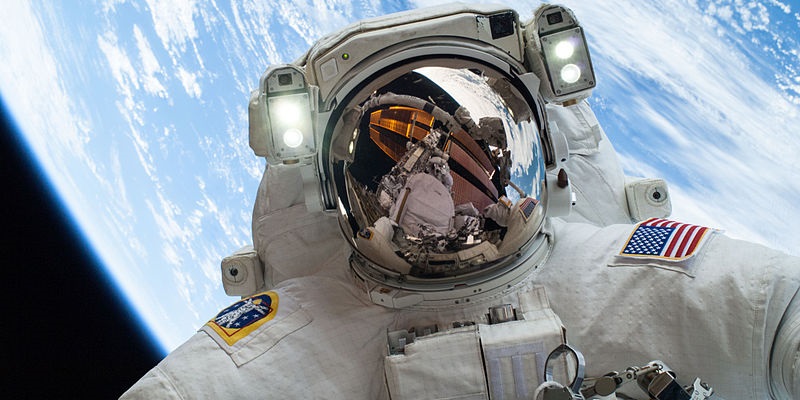
Mike Hopkins, a NASA astronaut and the flight engineer for Expedition 38, takes a spacewalk on Dec. 24, 2013. (Image: NASA)
NASA is now accepting applications for what many consider to be the best profession in the universe: astronaut.
On the job posting, which is shown on www.usajobs.gov, the agency said the selected astronauts could take flight in four different spacecraft. Those spacecraft include NASA’s Orion, two commercial spacecraft (Boeing’s CST-100 Starline and SpaceX’s Crew Dragon), and on the International Space Station. Orion though, would offer the astronauts the most remarkable job, a flight to Mars.
“NASA is on an ambitious journey to Mars and we’re looking for talented men and women from diverse backgrounds and every walk of life to help get us there,” said NASA Administrator and former astronaut Charles Bolden in a press release.
To be considered, applicants must meet all of the minimum requirements by the application processes’ closing date, which is Feb. 18, 2016. Among other things, applicants must be a United States citizen, possess a bachelor’s degree in science, math, or engineering, and have at least three years of related professional experience or 1,000 hours of pilot-in-command time in a jet aircraft. Applicants must also meet a number of physical requirements. NASA said that, based off of personal profiles listed on LinkedIn, around 3 million people working in the U.S. claim to have met the minimum academic requirements for the job. The selected astronauts would be paid between $66,000 and $145,000 a year.
The application process for the job listing will be very competitive. Also, the group of astronauts who have flown for NASA is less than 400. Despite the daunting numbers, NASA encourages many to apply.
“NASA’s mission, and what we need from the astronauts helping to carry it out, has evolved over the years,” said Brian Kelly, director of flight operations at NASA’s Houston-based Johnson Space Center. “Some people would be surprised to learn they might have what it takes. We want and need a diverse mix of individuals to ensure we have the best astronaut corps possible.”
To supplement the information provided on the job posting, NASA will be hosting a question and answer forum today at 4 p.m. on Reddit.com. NASA astronaut Shannon Walker and astronaut selection manager Anne Roember will head the forum.
Filed Under: Aerospace + defense




